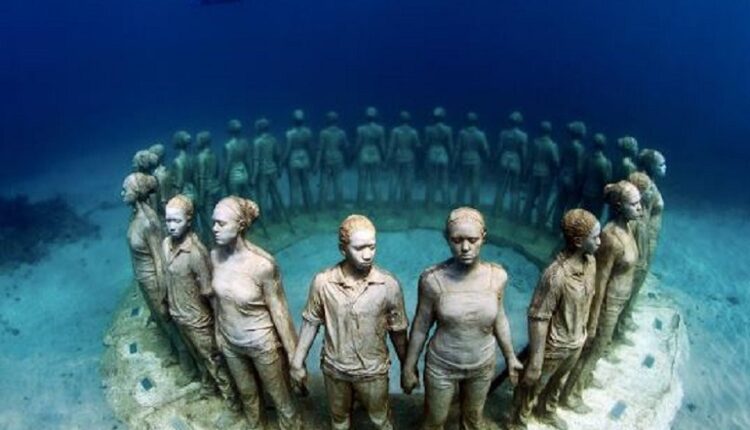Understanding Grenada’s haunting underwater sculpture park
The Caribbean has been touted as the best destination for people looking for some sand, sun and water. And in Grenada, known as the island of Spice and the Big drum nation, you will experience more than that. Located in the southeastern Caribbean Sea, Grenada, apart from its spice, festivals and amazing people, is home to one of the Top 25 Wonders of the World by National Geographic — the Grenada Underwater Sculpture Park.
It is the world’s first underwater sculpture park. You will find it at the bottom of Molinere Bay and it’s only accessible by scuba diving, snorkelling, and glass-bottom boats. The sculptures are about 3-5 meters underwater, with some being just six feet below the surface.
When British sculptor Jason deCaires Taylor designed the park in 2007, his aim wasn’t just to create something that would look hauntingly beautiful underwater but to contribute to the environmental sustainability of the bay by offering a habitat for marine life, including algae and corals.
And though these life-size sculptures may have first had a single gray color, today they have become a blend of greens, yellows, and pinks due to currents, wave action, among other forces. From a man sitting typing on a desk typing to female figures and a bicycle rider, these sculptures have over the years been a sight to behold.
But one of the sculptures, titled “Vicissitudes”, which features a group of children holding hands is what has got people talking since the park was created. The children, 26 in total, are Grenadian. Positioned in a circle, the children are facing out into nutrient-rich oceanic currents. People have created stories around this amazing work of art for years now. Some say that the children represent enslaved men and women thrown off ships many decades ago while others say the sculpture represents the circle of life. But, according to underwatersculpture.com, the piece is “a symbol of unity and resilience. They are an example of how we are inscribed and formed by the nutrients we absorb. However, locally it was widely interpreted as a tribute to slavery due to the structural connections resembling shackles and the proximity to the Atlantic Ocean and the Middle Passage.”
Indeed, Taylor made his work a part of the environment considering the materials and designs he used. He said in a 2015 TED Talk that materials used included a long-lasting pH-neutral cement which “provides a stable and permanent platform; it is textured to allow coral polyps to attach. We position them down current from natural reefs so that after spawning, there are areas for them to settle. The formations are all configured so that they aggregate fish on a really large scale.”
The sculptures were all constructed on land before a crane transferred them into the ocean. Today, with similar installations around the world, the Grenada Underwater Sculpture Park managed by the local government continues to support conservation efforts.



